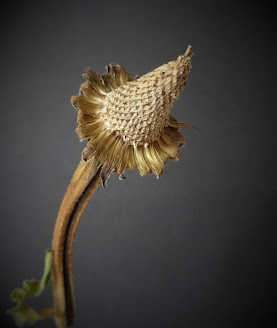It is time to harvest some wildflower seeds, in order to expand the native plant population in the riparian buffer surrounding our pond. There are more than 30 documented native species in this buffer. Close to the water is a ring of wetland; outside of that is a ring of moist to dry areas. So the pond provides a comfortable home for a wide variety of plants. We hope to reduce the 'weeds' and encourage the flowering native plants to flourish.
For example, a few coneflowers bloom here. Purple Coneflower Echinacea purpurea now has some blooms 'going to seed' as the petals dry out. When I remove the seeds, intending to spread them around the pond for new plants, we can see why this plant is called 'cone flower'.





























